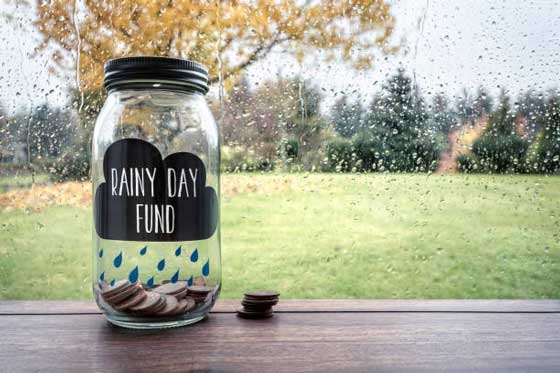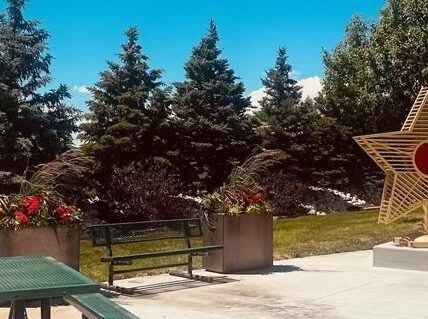By Jasmine Hall
Wyoming Tribune Eagle
Via- Wyoming News Exchange
CHEYENNE — Gov. Mark Gordon presented his plan Thursday for the more than $1 billion in federal American Rescue Plan Act funds given to the state, suggesting more than half should be saved for the future.
The rest was allocated for large-scale energy projects, economic development, higher education initiatives, art and historic preservation, wildlife conservation, outdoor recreation and health services.
The Governor’s Office has spent the past few weeks breaking down the $4 billion in requests from stakeholders, the public and state agencies to select and share with legislators. Members of the Joint Appropriations Committee heard the proposals in preparation for negotiations during the upcoming 2022 budget session, where funding could be adjusted and reprioritized.
“I believe these funds must be used strategically and provide benefits for our grandchildren,” Gordon told committee members Thursday morning. “This is what has guided my recommendations and criteria for supporting projects. This lens has been valuable and helped focus our efforts on what will make Wyoming stronger.”
Gordon’s goal to save more than half a billion dollars for the future was in accordance with “the principles outlined at the start of this endeavor to preserve opportunity and foster longterm resilience.”
But some legislators wondered if it might be best to put more than half of the funding into Wyoming communities immediately. Rep. Karlee Provenza, D-Laramie, said she understood the concerns about the future of state revenue, but she said too many communities were struggling not to spend the dollars.
“We’re certainly not hearing cries for more money in savings,” she said.
Provenza said this was not to point fingers at the governor, because the Legislature had put the state in a position to have to worry about the future by not diversifying revenue streams.
Political leaders across the nation are having these kinds of discussions in regards to where to allocate ARPA dollars. The funding is meant to address the immediate and long-term effects of the ongoing COVID-19 pandemic, with the act totaling $1.9 trillion in spending for states, counties, cities and tribes.
Wyoming received $524 million in May, and will collect a second payment of the same amount next year under the Coronavirus State and Local Fiscal Recover Funds.
Gordon announced his top three priorities for the funding are to retain and attract working families to permanently live in the state, strengthen the economy, and better align workforce economic development and education opportunities. Other identified areas included broadband expansion, infrastructure investments, health care solutions and government efficiency.
The first and highest monetary proposal suggested by the governor to meet these goals was that $100 million be placed in the Legislative Stabilization Reserve Account, also known as the “rainy-day fund,” and earmarked to match private sector or federal funds for future large-scale energy projects. Examples included investment in carbon capture utilization and storage, carbon dioxide transportation, hydrogen production and solar development.
“While we are certainly not throwing in the towel on our ‘all of the above’ energy strategy, these are possibilities for both significant private and federally funded projects that will position Wyoming as a continued energy powerhouse in the new energy paradigm,” he said.
The second-largest appropriation was $75 million to the Wyoming Wildlife and Natural Resource Trust Fund, which is charged with enhancing the wildlife and natural resource values of the state. Executive Director Bob Budd said projects that are funded range from rebuilding rivers to conservation of local wildlife.
The program was previously envisioned in state statute to have a minimum of $200 million in the trust, and Gordon said it was time to make an effort to fully fund the legacy. Budd agreed, and explained the agency has been operating at a little over half of that. Now, he said, the funding would enhance and benefit individuals maintaining the land and wildlife, such as elk, mule deer and trout.
“I think that it bodes well for our ability to do the work that we’ve been doing, and continue it and expand on it,” he said. “… It’s a big deal, and it’s probably overdue.”
Education would receive another significant portion of the funding, with $55 million recommended toward the Wyoming Innovation Partnership. The partnership includes local higher education institutions that will create collaborative courses in entrepreneurship, energy, technology, tourism and hospitality to keep an innovative workforce local.
“We have been working with community colleges and the university to establish funding that is nimble and deployable to meet the needs of emerging workforce development programs,” Gordon said. “To support economic innovation and to meet the challenges of providing the most up-to-date and relevant technologies, rather than funding programs that have skinflint constituencies always eager to use state funds to fund them.”
Other general fund projects included: $40 million for grants to grow outdoor recreation in Wyoming; $30 million for economic development efforts to support mining, agriculture and entrepreneurship; and $10 million to match federal funds for wildlife and highway crossing projects.
Another investment, similar to the Wildlife Trust Fund, was for the Wyoming Cultural Trust Fund in the amount of $10 million. Although it was a smaller contribution in comparison, program coordinator Renée Bovée said she is ecstatic. This will allow grants and funding to go toward cultural preservation, archeology, prehistory, research, investigations and a contemporary arts festival.
“It’s more than just the product that we are helping support, it’s the people behind that product,” she said. “And it’s the economic development in a community.”
These kinds of proposals geared toward revenue replacement made up nearly $207 million and the bulk of the governor’s presentation, but there is still $279 million left to address the immediate and long-term impacts of the pandemic.
One of the more notable funding proposals mentioned was the Housing Trust Investment for $22.6 million.
“I propose making a very significant investment, first in a more flexible and responsible housing program,” Gordon said.
The grant is a pilot to provide startup financing to better address Wyoming’s statewide housing crisis, which will fund housing for Wyoming’s workforce, homeless residents, low-to-moderate income rentals and moderate-income home ownership.
Other eligible ARPA dollars were, in large part, allocated to the Wyoming Department of Health. The governor recommended more than $100 million be allocated for mental health services, suicide prevention, capital construction, telehealth and other services.
Mental health was given a considerable percentage of the dollars allocated to the health department. Around $7 million was considered for efforts to expand the Suicide Lifeline to a 24-hour service, $200,000 for mental health first aid training and $20 million for innovations in the areas of behavioral health reform, substance abuse and other services.
Overall, the largest portion of funding in this area was $40 million for the Health and Human Services Capital Construction Account.
The recommendations made by the governor are not final, and will be considered by state legislators during the budget session, which begins Feb. 14. Some members of the Appropriations Committee said they still had to take into account the requests of their constituents as they go into the new year.
The state is also expecting the arrival of several other new funding programs created by the federal government, along with possible funding from the infrastructure legislation worth $1 trillion passed by Congress in November.
“What we’ve all found out is for every billion dollars we have, there’s four billion places for it to go,” said Sen. Drew Perkins, R-Casper.






